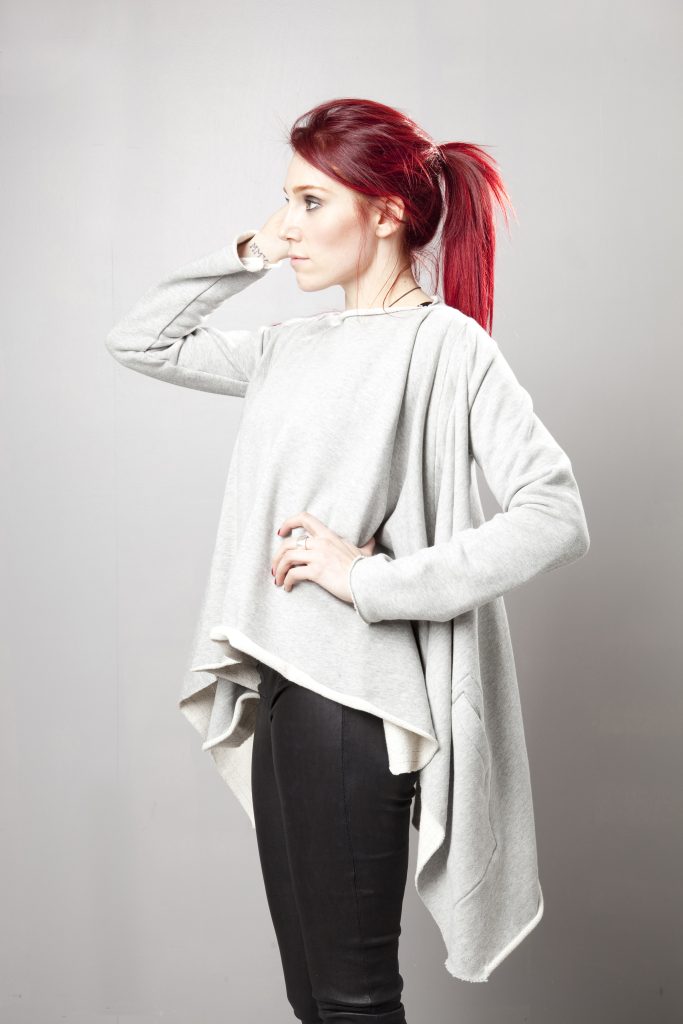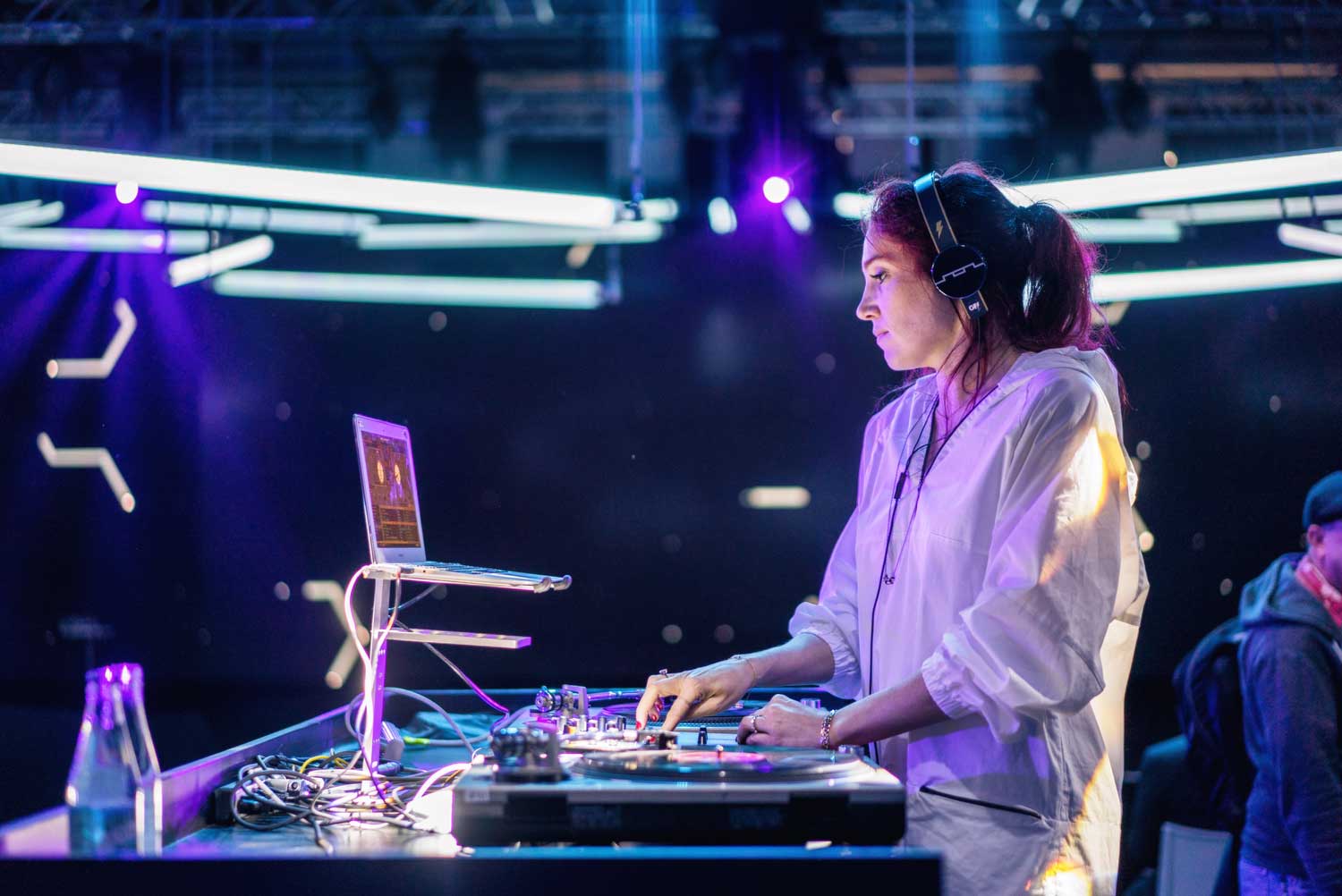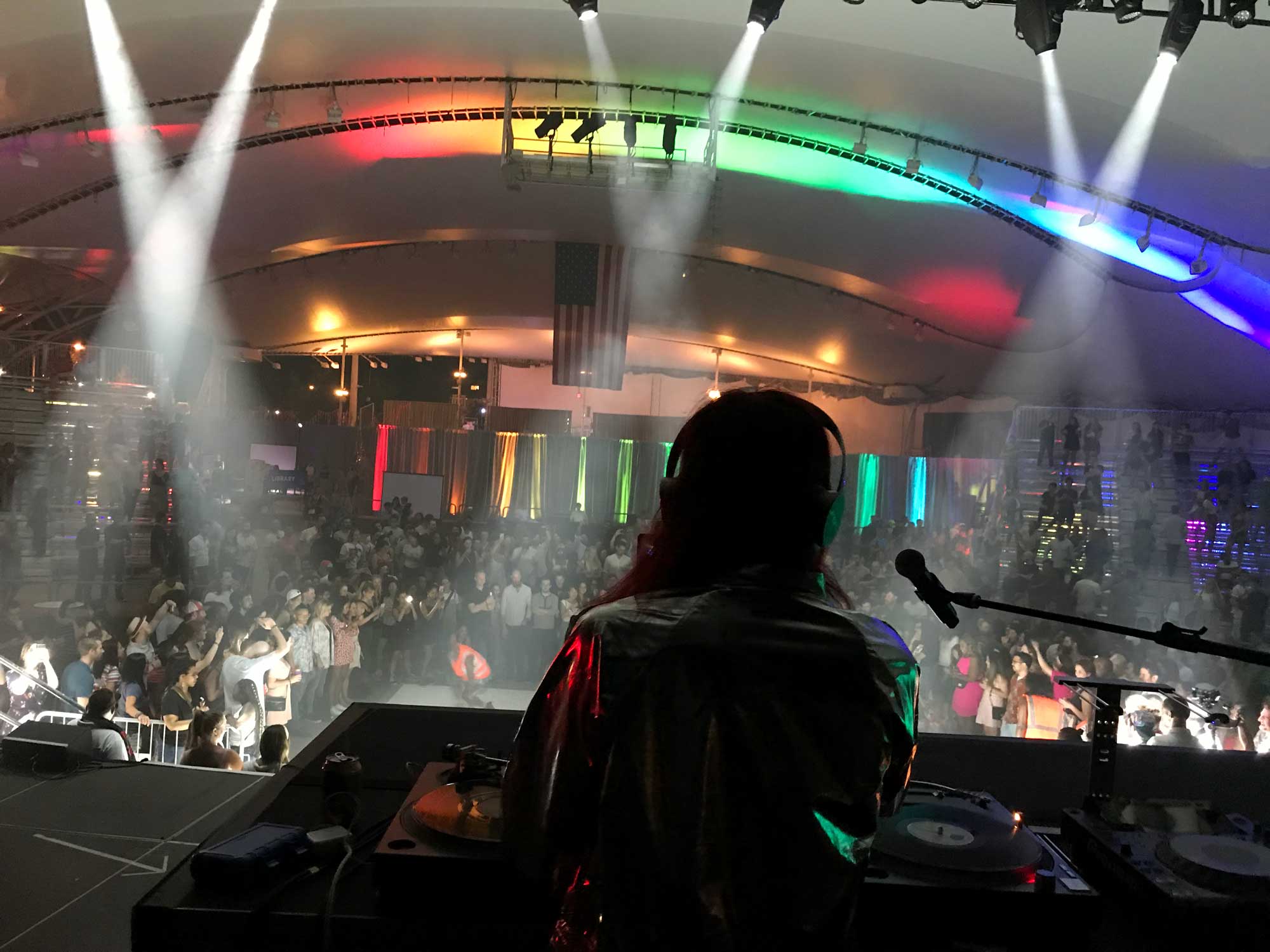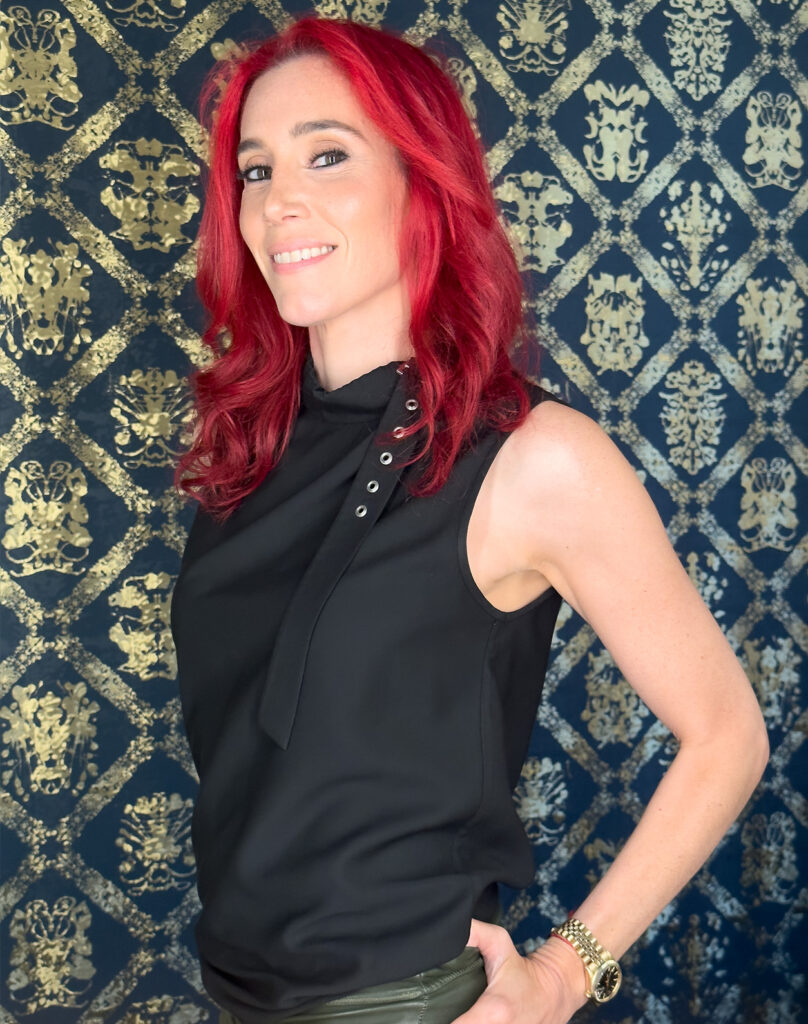Article
Interview with DJ Hesta Prynn How becoming a clinical therapist and addressing hearing loss have continued to expand her beliefs in the healing power of music

Julie Potash Slavin, aka DJ Hesta Prynn, is a respected figure in the music and mental health space. An NYC-based DJ and radio personality who, after an eye-opening pandemic experience, became committed to exploring the powerful connection between music and emotional well-being, pursued a master’s in clinical therapy.
She’s now taking her vinyl mixing skills—she was originally mentored by Questlove—and using her knowledge of music to create dance experiences that combine the power of therapy and the energy of the club floor.
In an hour-long conversation, we discussed her journey to being a DJ, dealing with hearing loss, going to graduate school, and how these elements came together for her present-day focus: Music is therapy.
The Present: Starting from the Beginning
Julie got her start in music in an all-female hip-hop group called Northern State. “That’s how I got my MC name, Hesta Prynn. I would have chosen something else, but my two bandmates were at my house, and we were downloading music from Napster, Limewire, or something similar. And they said, ‘We want to be a girl version of the Beastie Boys, and we want you to be in it.’ And I said, ‘Well, let’s not call it something over the top feminist like Hesta Prynn.’ And they said, ‘That’s your MC name,’” she shared. “I said, ‘We’re going to sign a big record deal.’ And they were like, ‘okay,’ and that’s legitimately the conversation.”
Julie had always dreamed about being a performing artist in NYC and going to acting camp and Tisch at NYU, but it wasn’t until she got the band invite that she realized this was something she could do. “I played piano, and I knew bands, artists, and all kinds of people, but I didn’t really know what a person like me—someone who loves music and loves to talk about music—could really do. I didn’t have an ‘in’ or an understanding of what was possible. When I got the invite from the band, I was like, that’s it. I can take that and run with it.”
And that’s what they did. The band created the foundation for her launch into a career in music and, ultimately, years down the road in music and therapy. Northern State was a band for eight years, signed a major label deal, and toured with The Roots, leading to her work mixing vinyl as a sought-after DJ.
“As a band, we were just ignorant enough to think we could do this. We put together a demo, and it was reviewed. I was working at Details magazine as a fact checker, and I ended up sending it out to certain publications. And Robert Christgau, the legendary music journalist, ended up with our demo in his hands. He called me on my landline because that was the number on the CD, and he said, I am going to review this. I asked him not to because it was just a demo. And he said I’m going to give it four stars in Rolling Stone and put it on the list of best music. I said, “Okay, I didn’t really understand what it meant.”
Ultimately, as the band signed a large deal with Columbia, they got to experience working with some interesting individuals in the industry, but things started to fall apart, which began to pave the way for a new direction for Julie in the music space. “Through that record deal, you know, we worked with Muggs from Cypress Hill and with Horovitz of the Beastie Boys, who’s like a friend and a fan. And, with Pete Rock and we, you know, Chuck D. We did all these amazing things. But when it started to fall apart, I was going through a divorce. I married young and began spending more time in Philadelphia.”

Dealing with Hearing Loss and Becoming a DJ
“While I was going through a divorce, and I was spending more time in Philadelphia with the Roots. Questlove had this amazing vinyl library, which he still has, and he taught us how to mix vinyl records. And because I was going through this bad time in my personal life, I didn’t want to go home.” Ultimately, she continued to learn how to mix vinyl. “He was like, you’re good at this. You should do this.” And I didn’t really know that being a DJ was a job you could do unless you were Funk Flex or somebody who really is in that space. It’s like being a rapper. I thought I could do that because I know how to write. But I can’t be a DJ. To me, that was the craziest thing.”
But she continued to pursue the work, and as she decided not to be in the band anymore, she began to DJ. Ultimately, that work became the next phase of her career, which she is still doing today, pushing the boundaries in the space.
And there it was. Julie had started to figure out her place as a musician and artist, but she had an even bigger obstacle to overcome. From a young age, Julie knew she had hearing loss. She failed her first hearing test when she was five and then all the subsequent tests. Out of this testing, they discovered that she had a hearing loss in the range of human speech—a non-syndromic hearing loss, which you can see in her genetics.
“I have always been able to get by. I mean, I can hear. I’m definitely a hard-of-hearing person. My hearing loss is specifically in the speech range, which is probably the worst place you want it.”
Julie believes this is part of what attracted her to music: it was something she could “really hear.”
“I remember listening to Hot 97 as a teenager. You know, like, in my boombox falling asleep and listening to those guys, and, you know, it’s much easier to hear in your headphones.”
Not being able to hear speech also created a barrier for her with people; she could not understand what they were saying to her. Becoming a DJ was the best scenario for that. It allows you to be at the party without having to be at the party. “I could be comfortable doing what I wanted to do, which was interacting with the music rather than directly with people.”
So, she continued to be at the party, giving great experiences to those listening to her mix vinyl but not dealing with her hearing loss itself. Ultimately, six years ago, that changed. She decided to get hearing aids.
“When I decided to embrace my hearing loss, it’s because I’m a mom and my kid has something with her eye. She has an eye condition. And at the time, we didn’t know how this might manifest in her life. And I was having trouble hearing her. So, I decided that I was going to start ‘walking the walk’ and not just ‘talking the talk’ about what it means to celebrate who you are: loving self-love and embracing who you are. I then got the hearing aids, which was emotionally and physically a challenge. I started looking into hearing aids or hearing as a concept. And the first thing I learned was that you don’t always see the Deaf community out in the world. Do you know anyone who is deaf?” she asks.
“Well, the first thing is how the Deaf community communicates with each other. Deaf culture is all about ASL (American Sign Language), so I decided to learn ASL. I went to a school in Brooklyn founded by Jeremy Lee Stone. I expected it to be very classroom-like and very buttoned up, but it wasn’t. It was just like hip-hop.”
Julie then learned that ASL involves your whole body, facial expressions, and more, and she recognized the art of ASL as a language. “Suddenly, you could see art being created out of this language. Art is what allows us to look at someone else’s culture and say, this is fucking cool.”
Julie recognizes that deaf people experience sound in a way that hearing people almost don’t have the freedom to because they experience it in the full body. A hearing person can experience sound in the body, of course, but they’re flooded by all the other information they are getting, too.
After learning ASL and becoming more aware of the community, she became even more interested in how people experience music. “I look at how people experience music and how we can use music that is not just passive listening. How can we use music to transform? This is really the beat I’m on now.”

The Present: Wellness and Music is Therapy
After learning ASL, moving forward with hearing loss, and experiencing hearing in a new way through hearing aids, she wanted to continue to explore the space—the connection between music and therapy.
She thinks about a DJ set in four categories: the flow of the music, the transitions, and the sound progressions. “I think in tempo. I think in key. I think in energy. And I think in storytelling. Some DJs are really about energy, and that’s what those early 2011 EDM shows or playlists are about—energy. And there was even a program when Serato (mixing tool) first came out that would help you label the energy of each song.”
She notes, “I really favored storytelling for a long time, and I think I probably still do. I think about the story before I think about sound. I was trained by Questlove, so that makes total sense. I’m curating something. I think, what do I want you to feel? What’s the emotion I want you to feel? Where do I want to take you? And then I’ll take you somewhere else, or I will tell a story about growing up, and we go through the decades.”
How do storytelling and DJ sets lead to where she is today? As she continued to DJ and began co-hosting a call-in Sirius XM radio show, Julie found that what energized her was hearing people talk about how the emotional resonance a song or an artist had for them in their lives. “If you hear a U2 song, you hear the Edge playing. The streets have no name. That intro of that song even, you already know what to feel. Right? I just said the song’s name and your body knew exactly what to do.”
She wanted to continue those conversations, not just as a DJ but as a DJ who understood the science behind that work. She went to graduate school, put in thousands of hours of patient therapy practice, and became a licensed clinical therapist.
“And now I offer this live sonic experience that mixes music and motivation and a little bit of meditation. And I have tools and a process where I help you connect your feelings to the song, to your dreams, and it’s all based in science, and it’s all based in the magic trick that music can get you to feel something faster and more effectively than words can.”
When Julie thinks of sound as an art form, she thinks of music. “I think of songs, and I think of the songs that can create the same chemical reaction in almost everyone who listens to them. I’m talking about Bridge over Troubled Water, John Lennon’s Imagine, and if you don’t know what the words mean, even if you don’t speak English, you feel that. There are many songs like this, and I think that is incredibly powerful. We take pills, which cause a chemical change in our body. That’s what drugs do. And these songs also cause a chemical change in our body. That’s a very powerful thing.”
Julie then clarifies, “But I do not want to study the science behind it exactly that way. I’m the person who’s prescribing it. I’m the person who is seeing how effective this is. I’m the one figuring it out. But I’m figuring it out based on science because I have that training: Which song will work and why? What do I need to get you to sing to make you feel the way I think you should feel to create the life you want for yourself? That’s what we do in therapy through talking. But here, through music, is another way.”
If you want to learn more, follow her on Instagram @hestaprynnmusic



